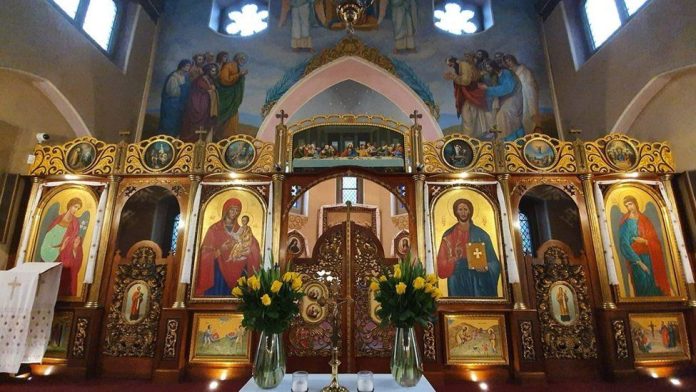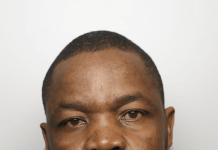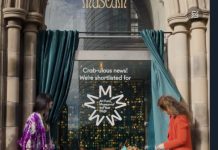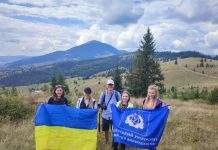Two Ukrainian churches in Greater Manchester have been granted Grade II listed status by the Department for Culture, Media and Sport as part of the celebrations for the Eurovision Song Contest, which is being hosted in Liverpool on behalf of Ukraine.
The Ukrainian Catholic Church of the Dormition of the Holy Mary Mother of God, Salford was the first church owned by Ukrainian Catholics in Great Britain, it was designated as the ‘mother church’ – or Sobor – when it was consecrated in 1954.
The Victorian Gothic-style building opened in the late 19th century as the Sunday school for the nearby Congregational Church.
It was bought by the Ukrainian community in 1954 to create their first permanent home in the north and converted by adding traditional features including an iconostasis – a brightly coloured, highly ornate screen of icons.
It was consecrated by Archbishop Ivan Bucczko on 29 August 1954 and became a thriving hub of the community, hosting activities including a Saturday school, Homin (male voice choir) and Plast (scouts).
At the front of the church, a black granite plaque marks the tragic moment in Ukraine’s history known as the Holodomor. The inscription, in Ukrainian and English, reads: “In memory of seven million victims of Moscow made famine in Ukraine 1932-1933.”
The Ukrainian Catholic Church of St Peter and St Paul and All Saints, Chadderton Way, Northmoor, Oldham started life as an Anglican church in 1889, it was adopted as the Ukrainian Catholic Church of All Saints & St Peter & St Paul in 1987.
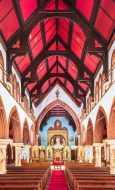 The building is a fantastic blend of English and Ukrainian religious traditions.
The building is a fantastic blend of English and Ukrainian religious traditions.
Outside, it looks like a traditional Anglican Church, with a soaring-gothic design, beautifully detailed architecture and stained-glass windows. One of these depicts the Ascension of Christ into heaven, with the Oldham skyline as the background.
Yet alongside the original fittings, important features have been added to adapt the church for its new congregation.These include an elaborate baldacchino – a metal canopy over the altar – and iconostasis, a highly ornate screen of icons.
The first recorded Ukrainians arrived in the late 19th and early 20th century when several hundred people from western Ukraine settled in Manchester.
Following the Second World War, around 35,000 Ukrainians came to the UK as part of the European Volunteer Workers scheme. This was set up to address labour shortages by providing jobs in industry and agriculture to ‘displaced’ people.
Many found work in the cotton mills of Manchester and woollen industry in West Yorkshire.
More Ukrainians migrated to England following the collapse of the Soviet Union and, most recently, to escape the Russian invasion of Ukraine in 2022.
As Ukrainian communities have developed, they have often shared or adapted existing buildings to create spaces for worship, education and cultural celebrations to keep their heritage alive

